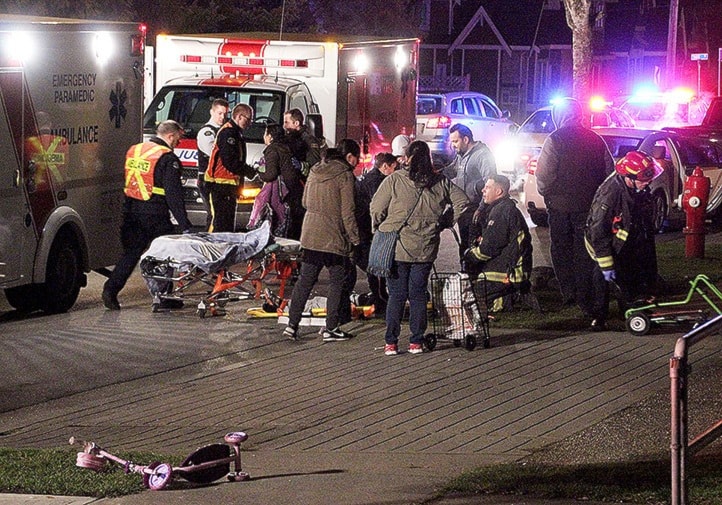Road safety in B.C. is the focus of a report released last week by Dr. Perry Kendall, the Provincial Health Officer. Where the Rubber Meets the Road: Reducing the Impact of Motor Vehicle Crashes on Health and Well-being in B.C. uses data from a wide variety of sources to show where the province stands in the matter of road safety, and offers 28 recommendations for lower rates of fatalities and serious injuries.
The report notes the danger to vulnerable road users such as cyclists, motorcyclists, and pedestrians, who accounted for one-third of road fatalities in 2013. One key recommendation was that default speed limits be dropped to 30km/hour from the current 50km rate, as data shows that the odds of a vulnerable road user surviving an accident involving a vehicle travelling at 30km/hour are 80 to 90 per cent. The survival rate drops to 15 to 20 per cent when the vehicle is travelling 50km/hour.
Transportation and Infrastructure Minister Todd Stone was quick to rule out this option, however, noting that lowering default speed limits to 40km/hour was debated at last year’s Union of B.C. Municipalities conference, where it was resoundingly defeated. He said that there would have to be a significant change in position of local governments before he would consider reducing the default speed limit.
Stone also shot down another of the report’s recommendations, which was the re-introduction of photo radar speed enforcement. The Minister described the previous photo radar program as a “largely failed” one that was little more than a tax grab.
Dr. Bonnie Henry, who presented highlights from the report, said that while there has been a 42.6 per cent reduction in fatalities on B.C. roads in the last 20 years, there has been no decrease in cyclist and pedestrian fatalities. “There’s room for substantial improvement.” She also noted that a disproportionate number of First Nations people are affected.
Speeding and driving too fast for conditions are the top contributors to road fatalities. Henry said that while impaired driving has been reduced dramatically in recent years, it is still a factor. Distracted driving is on the increase, and is an area that needs more attention.
The report notes that rural and remote communities are among the populations that suffer the heaviest burden of road traffic fatalities. Longer travelling distances, lack of public transit, wildlife on the road, and the fact that emergency services may take longer to reach accident sites all contribute to more fatalities in these areas.
Other recommendations of the report include extending the required zero Blood Alcohol Content for new drivers beyond the completion of the Graduated Licensing Program to age 25; improving the capacity to identify all types of impaired driving, including drugs; prioritizing pedestrian and cyclist health and safety in roadway and intersection design; implementing a vehicle safety testing program that requires regular basic vehicle safety checks as a condition of vehicle insurance; and continuing to support the First Nations Health Authority to develop an Aboriginal injury prevention strategy.
“Road injuries and deaths are a human-made problem,” says Henry, “with human-made solutions.”
